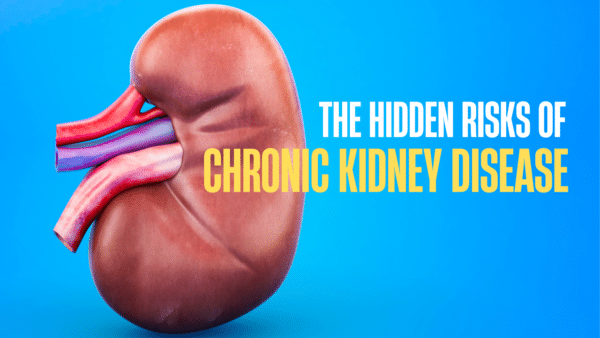Preventive measures against heart disease are crucial since it is a top global killer. Blood tests are a big help in figuring out the risk of cardiovascular disease, and they also give important information about the general health of the heart. Your doctor may use the results of these tests to figure out how likely you are to get heart disease and give you advice like changing your diet or taking medicine.
The LIPID BLOOD TEST PANEL PLUS HEMOGLOBIN (HB) A1C blood test is one example of such a blood test that evaluates many indicators of cardiovascular health. A blood sample is taken for lab analysis. This test may tell your doctor a lot about your cardiovascular health and risk for heart disease by analyzing your cholesterol, glucose, and hemoglobin levels. What exactly does having a LIPID BLOOD TEST PANEL in addition to a HEMOGLOBIN (HB) A1C mean?
Cholesterol, glucose, and hemoglobin are just a few of the indicators of cardiovascular health that may be measured with the LIPID BLOOD TEST PANEL PLUS HEMOGLOBIN (HB) A1C blood test. A blood sample is taken for lab analysis.
How to get your blood ready for testing.
Getting yourself ready for a LIPID BLOOD TEST PANEL PLUS HEMOGLOBIN (HB) A1C blood test is essential for obtaining reliable results. It would be best if you told your doctor about any vitamins or medicines you’re taking before the test since they may affect the outcome. Drugs that may have negative effects on the lipid profile include diuretics, beta-blockers, progestogens, combination oral contraceptives including “second generation” progestogens, danazol, immunosuppressive drugs, protease inhibitors, and enzyme-inducing anticonvulsants.
Your doctor may want to know about any drugs you’re taking and may also recommend that you abstain from eating for a certain period of time before the test. Results are more reliable and free from outside influences when participants fast. Fasting for 8-12 hours may be necessary.
Carefully follow your doctor’s directions as you prepare to do the LIPID BLOOD TEST PANEL PLUS HEMOGLOBIN (HB) A1C blood test. Your doctor’s ability to evaluate your heart health and estimate your risk of heart disease might be compromised if you do not fast properly or take drugs that interfere with the findings.
In addition to drinking enough water before the test, the body needs to be well-hydrated for accurate results. If you drink enough water before your blood is drawn, the sample will be clean and uncontaminated.
The results of the LIPID BLOOD TEST PANEL PLUS HEMOGLOBIN (HB) A1C blood test will be more accurate if you prepare well. You can help your doctor figure out how likely you are to get heart disease by talking to them about your medications, fasting for the time allotted, and making sure you stay hydrated before and during the test.
Various lipids and hemoglobin (HB) levels may be measured with the LIPID BLOOD TEST PANEL PLUS HEMOGLOBIN (HB) A1C.
The LIPID BLOOD TEST PANEL PLUS HEMOGLOBIN (HB) A1C blood test measures many indications of cardiovascular health. The test measures:
- High LDL cholesterol
- LDL (low-density lipoprotein) (low-density lipoprotein) cholesterol
- HDL (high-density lipoprotein) (high-density lipoprotein) cholesterol
- Triglycerides
- Blood sugar levels
- Levels of Hemoglobin (HB) A1C
Is it recommended that you fast before the exam?
Fasting is a necessary precondition for the most reliable findings on the LIPID BLOOD TEST PANEL PLUS HEMOGLOBIN (HB) A1C blood test. Fasting is recommended since recent meal consumption might impact the levels of some indicators (such as glucose and cholesterol) being examined.
Fasting requirements range from 8-12 hours, depending on the kind of blood test performed. No food or drink other than water should be consumed during this period. Keep yourself hydrated by drinking lots of water, but skip the juice and milk if you’re trying to lose weight.
When your doctor orders you to fast, it’s crucial that you adhere strictly to his or her instructions so that he or she can get an accurate picture of your heart health and risk for heart disease. It’s crucial to see a medical professional if fasting causes you any anxiety.
How long does it typically take to draw blood?
A little sample of blood is collected for the LIPID BLOOD TEST PANEL PLUS HEMOGLOBIN (HB) A1C blood test. A medical practitioner would normally draw blood from you at a doctor’s office or laboratory.
Remove any jewelry or articles of clothing that might obstruct the needle’s path before the blood is drawn. After the region where your blood will be extracted has been cleaned, the healthcare provider will have you sit or lie down comfortably.
A tiny needle is placed into a vein, often in the arm, to extract blood. A tube, or vial, attached to the needle will hold the blood sample. After drawing the necessary quantity of blood, usually only a few milliliters, the medical practitioner will take the needle out.
After the blood has been taken, you may be told to put pressure on the puncture site to stop any more bleeding. A bandage to cover the wound will also be provided.
After collecting the blood, it will be transported to a lab for testing. In most cases, your physician will have the test findings in his or her hands within a few days.
There is nothing complicated about getting a LIPID BLOOD TEST PANEL PLUS HEMOGLOBIN (HB) A1C blood test. A medical expert draws blood and sends it to a lab for testing. From this test, your doctor will be able to figure out how likely it is that you will get heart disease.
Why does my doctor want me to undergo this evaluation?
The LIPID BLOOD TEST PANEL PLUS HEMOGLOBIN (HB) A1C blood test might have been requested by your doctor for several different diagnostic purposes.
- Checking your heart’s general condition
- To detect risk factors for cardiovascular disease, such as excessive cholesterol,
- To track the efficacy of preventative measures taken against cardiovascular diseases, such as dietary or pharmaceutical alterations
- In order to screen for prediabetes and diabetes
Conclusion
Several indicators of cardiovascular health may be evaluated with the LIPID BLOOD TEST PANEL PLUS HEMOGLOBIN (HB) A1C blood test. It’s best to consult your doctor about the test and any necessary preparations before undergoing it. The test’s findings will help your doctor assess your risk of cardiovascular disease and establish a plan for lowering that risk, whether via dietary modifications, exercise, or medication.
FAQs
What is the LIPID BLOOD TEST PANEL PLUS HEMOGLOBIN (HB) A1C blood test for?
Cholesterol, glucose, and hemoglobin are all evaluated in the LIPID BLOOD TEST PANEL PLUS HEMOGLOBIN (HB) A1C blood test, making it a thorough evaluation of cardiovascular health.
For the blood test, how do I get ready?
A: If you are taking any drugs or supplements that might potentially alter the findings of the LIPID BLOOD TEST PANEL PLUS HEMOGLOBIN (HB) A1C blood test, you should discuss this with your doctor before undergoing the test. If you need to fast for the test, your doctor will tell you how long you need to go without eating.
Inquiring minds want to know: What exactly does the LIPID BLOOD TEST PANEL PLUS HEMOGLOBIN (HB) A1C blood test check for?
Total cholesterol, low-density lipoprotein (LDL), high-density lipoprotein (HDL), triglycerides, glucose, and hemoglobin (HB) A1C are all examined in the LIPID BLOOD TEST PANEL PLUS HEMOGLOBIN (HB) A1C blood test to assess cardiovascular health.
To what extent should I fast before the blood test?
Fasting for a certain period of time before the test may be recommended by your doctor. If you fast before a test, the results won’t be affected by what you’ve been eating lately.
For what possible reasons may my doctor have wanted to check my lipid profile and hemoglobin (HB) A1C?
Your doctor may have ordered the LIPID BLOOD TEST PANEL PLUS HEMOGLOBIN (HB) A1C blood test to screen for diabetes or prediabetes, detect high cholesterol or other indications of heart disease, track the efficacy of lifestyle modifications or medicines, or evaluate your general cardiovascular health.
The LIPID BLOOD TEST PANEL PLUS HEMOGLOBIN (HB) A1C blood test, in conclusion, is a valuable method for gauging general cardiovascular health. If your goal is to lower your risk of heart disease, it’s vital that you follow your doctor’s preparation instructions and schedule frequent blood tests to track your heart health and make adjustments as needed.

